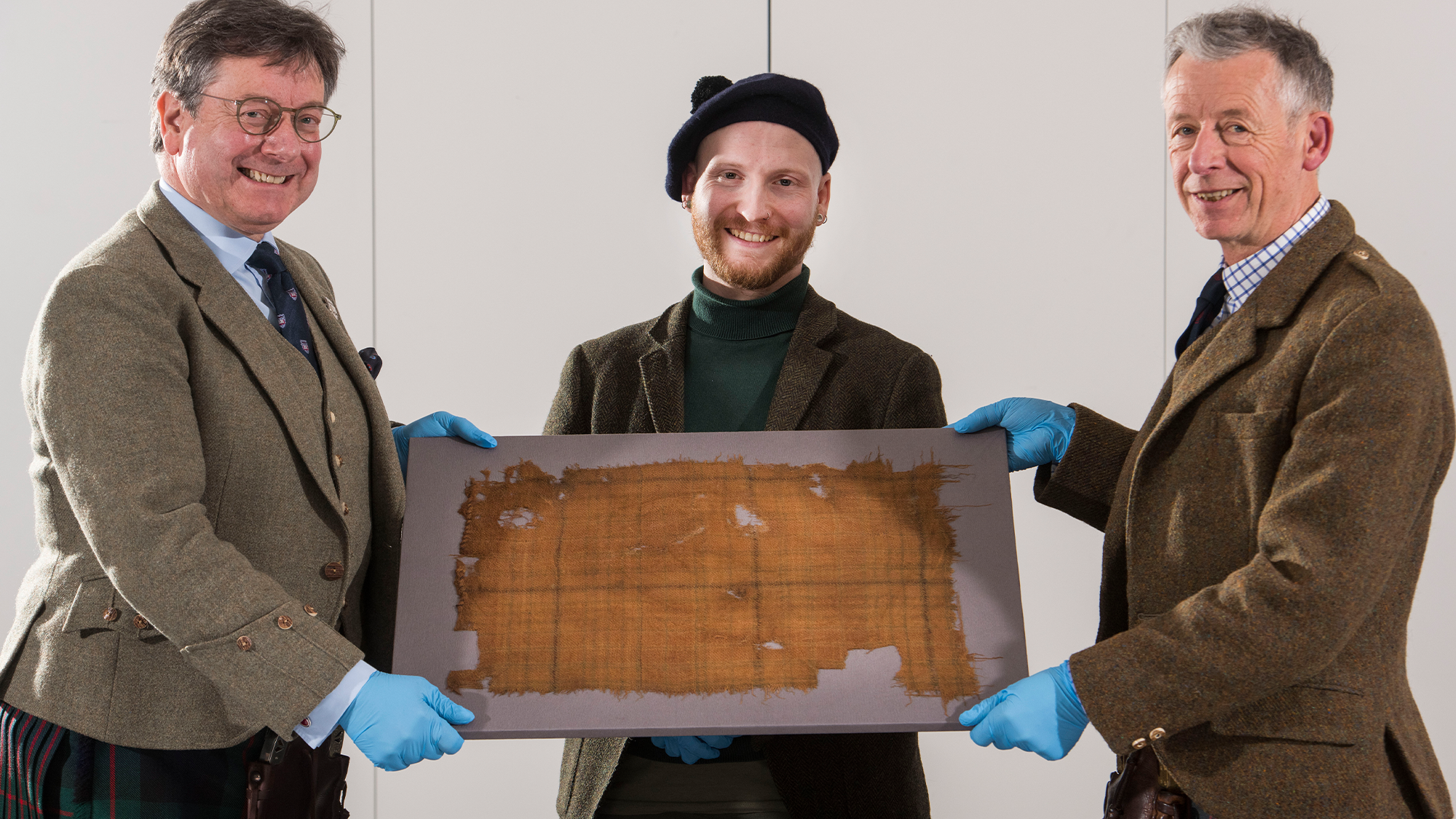

New research suggests that a piece of fabric tartan found in a peat bog in the Scottish Highlands may be the oldest traditional tartan ever found. The roughly 22 by 17 inch piece of Scottish history could be up to 500 years old and is on display at the V&A Dundee design museum in Dundee, Scotland.
The cloth was found in the early 1980s in Scotland’s Glen Affric valley, about 15 miles west of Loch Ness.
[Related: Codebreakers have finally deciphered the lost letters of Mary, Queen of Scots.]
The Scottish Tartans Authority (STA) commissioned dye analysis and radiocarbon testing of the textile to prove its age. Four initial colors–green, brown, and possibly red and yellow–were identified. The dye analysis confirmed that indigo or woad in the green fabric were both used. The analysis of the other colors was inconclusive. Since there wasn’t any evidence of artificial or semi-synthetic dyestuffs, the STA believes that it predates the 1750s and is believed to have been made between 1513 and 1625, during the reigns of King James V, Mary Queen of Scots, or King James VI/I.
Tartan experts believe that this tartan was likely an “outdoor working garment” and wouldn’t have been worn by nobility. Tartan itself is a specific type of textile made using colored wool and yarn that is woven into crisscrossing vertical and horizontal bands. The diagonal bands and color blocks repeat to form a pattern of squares and lines and different tartan patterns have been associated with specific Scottish clans for centuries.

“The tartan has several colors with multiple stripes of different sizes, and so it corresponds to what people would think of as a true tartan. The potential presence of red, a color that Gaels considered a status symbol, is interesting because of the more rustic nature of the cloth,” said STA head of research and collections Peter MacDonald, in reference to a Gaelic-speaking ethnic group from Scotland, Ireland, and the Isle of Man.
MacDonald added that the resting process took almost six months and that the team is thrilled with the results. “In Scotland, surviving examples of old textiles are rare as the soil is not conducive to their survival. The piece was buried in peat, meaning it had no exposure to air and it was therefore preserved,” MacDonald said in a statement.
[Related: A ship from the 16th century was just dredged up in England.]
Scientists believe it survived centuries of weather and war due to the lack of air. The cool and waterlogged conditions in the bog create a highly acidic and low-oxygen environment that helps preserve objects for millennia. In 2009, archaeologists found 3,000-year-old butter in a bog in Ireland and another team found the remains of a 4,000-year-old man with intact skin in 2013.
Some earlier possible examples of tartans have been found in England, including the Falkirk tartan which dates back to the third century. However, since the pattern is a simple checkered design and there is no evidence that the yarn was dyed, it is not considered a “true tartan.”
